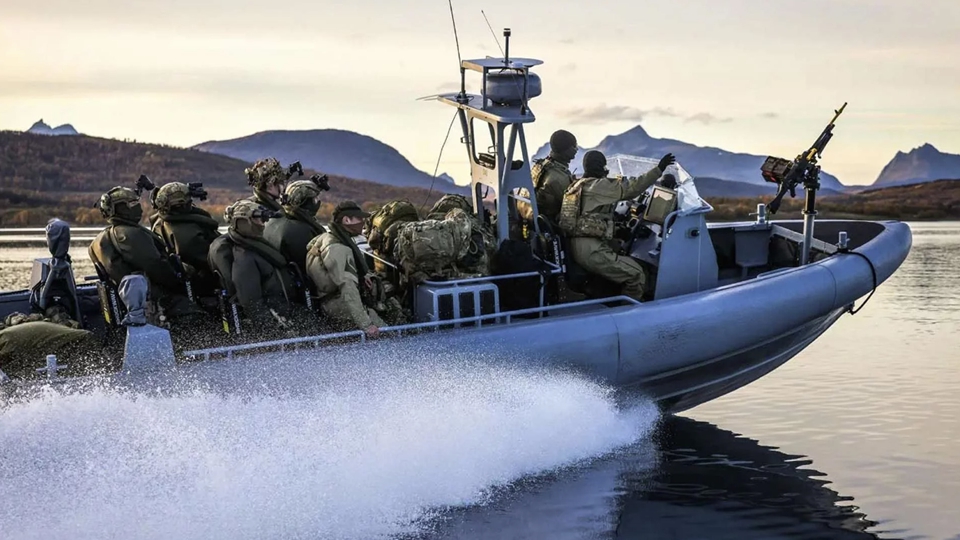By Liu Yiao and Zhang Chengwang

40 Commando Royal Marines of the UK take part in Exercise Arctic Tide.
Recently, the UK, together with Norway, the US, and other allies, conducted multiple cross-service joint exercises in northern Norway. In early October, the UK, Norway, and the US carried out joint training on Jan Mayen Island. In mid-October, the 40 Commando Royal Marines and the Norwegian Armed Forces completed the 10-day Exercise Arctic Tide in the Tromsø Fjord region.
The exercises, which covered amphibious assaults, infiltration operations, and fire support, underscore the UK's strategic intent to accelerate its Arctic deployment and strengthen its military presence in the region. Analysts believe that the series of joint exercises recently conducted by the UK in the Arctic is not only aimed at enhancing allied interoperability but also represents a carefully planned strategic maneuver serving its strategic interests. Specifically, the UK's objectives can be summarized in three main aspects.
The first is to safeguard strategic Arctic sea routes. As Arctic ice continues to melt, new shipping routes open, and competition for resources intensifies, the UK has consecutively issued reports such as the Defence Arctic Strategy and the UK's Defense Contribution in the High North, emphasizing the strategic importance of Arctic sea routes to the country. The UK views Jan Mayen Island as a crucial node of the Greenland–Iceland–UK line of defense and a key vantage point for monitoring North Atlantic maritime routes. During the joint exercise conducted by the UK, Norway, and the US on Jan Mayen Island, a UK Air Force A400M transport aircraft landed on the island for the first time, delivering multinational troops and equipment. This exercise not only validated the UK's force projection capability in polar regions but also enhanced its ability to monitor vital Arctic waterways, paving the way for a more sustained military presence in high-latitude areas such as Norway.
The second is to enhance regional influence and discourse power. The UK asserts that the series of exercises was conducted under the framework of the Joint Expeditionary Force (JEF), with the outcomes serving as a key basis for the force's future training. Led by the UK, the JEF currently includes Norway, Denmark, Sweden, Finland, Iceland, Estonia, Latvia, and Lithuania, and is designed to carry out rapid military interventions independently without banking on NATO frameworks. In fact, aside from the UK, only Norway participated in the exercises among JEF members. By emphasizing the connection between the exercises and the JEF, the UK aims to demonstrate its influence in regional defense and reinforce its leadership position.
The third is to test equipment performance and force adaptability to polar conditions. The extreme environment in the Arctic, like low temperatures, high winds, and prolonged polar day and night, poses severe challenges to fighter avionics, transport aircraft takeoff and landing performance, vehicle drivability, and soldiers' physiological and psychological resilience. In response, earlier this year, the UK announced a roughly £10 million (about $13.34 million) investment to procure snow specific equipment and dispatched members of its Future Commando Force to the Viking base in northern Norway for rotational training to boost its polar warfare capabilities. The recent exercises complement those efforts, aiming to collect real-world operational data and address shortcomings in equipment design and Arctic operational concepts.



